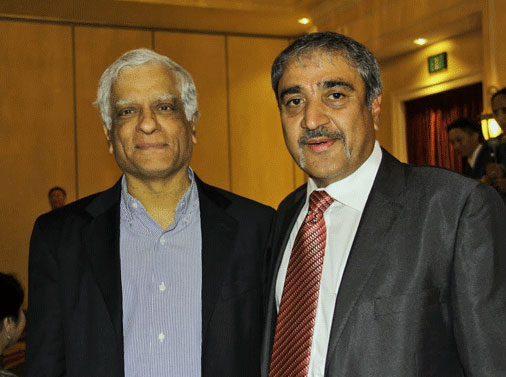The Imperative for Change - Ensuring a Bright Future for UC San Diego
September 26, 2013
Letter from Chancellor Pradeep K. Khosla and Executive Vice Chancellor Suresh Subramani
At the conclusion of UC San Diego’s 50th anniversary year in 2011, our campus community was inspired with a renewed sense of pride in our tremendous achievements. Our golden milestone afforded us a valuable opportunity to celebrate our unique and enviable academic trajectory, one that we hope to emulate in the future. These celebratory times were quickly followed by the inevitable question, “so, what’s next?” Our campus had arrived at a pivotal moment, which became increasingly clear as myriad important conversations on campus began to converge. Meanwhile, following decades of enormous growth in students, faculty, programs and buildings, the campus had been dealt five years of severe state funding cuts, resulting in the erosion of our budgeted-to-actual faculty ratio and student-to-faculty ratio. It was time to look toward the future and determine how to rebuild in a thoughtful and strategic manner to ensure an equally remarkable next 50 years for UC San Diego. Thus, we commenced a strategic planning process.
Our greatest challenge has been to maintain our excellence, reputation and access despite the declining state contributions to the UC budget and an unstable economy. We faced, and continue to face, mounting pressures from all of our constituents. The California governor and legislature continue to demand costs-containment measures and tuition caps—even as their budgetary choices seem to renege on the promise of the Master Plan by asking students to pay more than the state provides for their education. Parents and students continue to protest escalating tuition. Industry leaders renew calls for us to produce a different kind of graduate – creative problem solvers who are culturally competent and civic-minded as well as being technically knowledgeable. Our students and other campus constituents are demanding improvements in campus climate, diversity and inclusion. Philanthropic contributions have evolved into an emphasis on return on investment, as donors want to see a tangible impact of their gifts. And funding agencies have become increasingly focused on the societal impact of the research projects they support. Although the campus has secured approximately $1 billion in annual research funding for four consecutive years, we, as a campus, have come to recognize that the tide has turned and we need to be responsive.
While the country struggles to recover from a nationwide recession, and some have begun to question the value of investing in a UC education, our competition for the best and brightest students has heated up and the need for scholarships and fellowships has become more critical than ever. We pride ourselves on attracting the best and brightest students and know that nearly 75 percent of our admitted students are also admitted to UCLA. Multi-million dollar scholarship funds there, and at other competing universities, often mean that we can’t successfully compete for these outstanding students. In the last year, we have also seen online education become a focal point in the conversation to retool higher education. This new tool will allow us to help our own students and potentially provide access to many outside the university, but also allows the competition to reach into our backyard because they, too, can offer programs and degrees in San Diego. These factors all combine to potentially undermine our foundational principles of excellence, affordability and access. We have also begun to hear from our faculty that our increasing organizational complexity, and perhaps complacency, is beginning to stifle our innovative spirit, and the poaching of our elite research teams is an increasing threat to our academic excellence and research prowess.
Today, we face a very different landscape than we did 50 years ago when the university was founded. No longer as reliant on the state as we once were, and having reached steady state with respect to funding driven by undergraduate enrollment growth, it is clear that revenue growth will have to come from other sources, including philanthropy. But we need more than additional funding to succeed. We must step back and reevaluate everything we do, why and how. We need the commitment and bottom-up engagement of our campus members. We need to take smart risks and be flexible. And we need to plan for the next several decades, seizing opportunities that enhance our distinctiveness, quality and benefit to the public.
In sum, we must collectively and boldly respond to the challenges and the opportunities before us and that is one of the main reasons we initiated our campuswide strategic planning process. This effort is enabling us to develop a shared vision around solutions to our major challenges, establish mechanisms for assessing success, provide adequate resources, and shape the plan by empowering those who will actually execute it. This will allow us to redefine what it means to be a public research university, so that we can truly be student-centered, research-focused and service-oriented, and continue to have a transformative impact on the economic, social, cultural and imaginative experiences of our communities.
